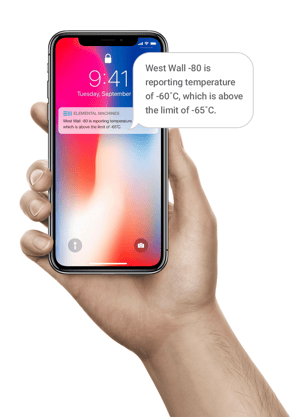Best Practices for Vaccine Cold Storage

With vaccines making daily news headlines these days, we thought we’d review the proper conditions for vaccine storage and handling to safeguard vaccine efficacy. There are a lot of ways that vaccine potency can be compromised. Thus, maintaining vaccine quality and the cold storage supply chain is a shared responsibility among manufacturers, distributors, and health-care providers. Each facility needs to develop appropriate procedures for staff training, error handling escalation, and of course cold storage management. Since staff training and error handling escalation can vary from facility to facility, this post will focus on best practices for cold storage management, as per CDC guidelines.
 When it comes to cold storage, there are two things to be aware of - cold storage equipment (ie. freezers and refrigerators) and temperature monitoring devices. Vaccine manufacturers specify storage conditions for their vaccines, and everyone in the supply chain needs to do their part to make sure inventory is stored at the right temps. For manufacturing and healthcare facilities, it’s important to have a standalone refrigerator and freezer to stock inventory. Combo fridge/freezer units cannot maintain accurate temperatures!
When it comes to cold storage, there are two things to be aware of - cold storage equipment (ie. freezers and refrigerators) and temperature monitoring devices. Vaccine manufacturers specify storage conditions for their vaccines, and everyone in the supply chain needs to do their part to make sure inventory is stored at the right temps. For manufacturing and healthcare facilities, it’s important to have a standalone refrigerator and freezer to stock inventory. Combo fridge/freezer units cannot maintain accurate temperatures!
The CDC also has several recommendations for the type of device you use for temperature monitoring of vaccines stored at your facility. We agree these are some really good recommendations, so we’d like to share them here. It’s important to:
- Use accurate, calibrated digital data loggers for monitoring temperatures of cold storage equipment. In fact, this is a requirement for providers that participate in the Vaccines for Children (VCF) Program. It’s recommended that data loggers should be calibrated every 1-2 years to ensure that they are still providing accurate readings. Obviously, if a device is no longer accurate even after calibration, it should be replaced. CDC recommends accuracy of ±0.5°C.
- Use data loggers that have digital displays readable from outside cold storage units.
- Use a data logger with a detachable probe that is placed in a buffered material so that the temperature reading more closely match the temperatures of the vaccines and not the cold air in the refrigerators/freezers.
- Use a data logger that alarms when cold storage temperatures are out-of-range.

- Use data loggers that have low battery indicators.
- Use data loggers that can store at least 4000 readings.
- Have a backup data logger for each cold storage unit.
What’s interesting to note is that the CDC does not recommend chart recorders or manual thermometers!
We’d also like to add our own insights on how to meet and exceed CDC recommendations using NIST-traceable, secure IoT-connected data loggers. These devices can accomplish everything listed above and more. For example, having a digital temperature display that’s readable from outside the unit is a good idea, but wouldn’t it be so much better to have those readings available to your staff even when they are not onsite? A power failure or door carelessly left open over the weekend can ruin your vaccine supply if no one is around to hear an alarm. That’s the power of IoT; it can stream data to the cloud so that your team can access the info even when they’re offsite. Also, IoT allows staff to receive alarms remotely through emails and/or SMS messages, a much more effective approach than an audible alarm.
At Elemental Machines, our data logging solutions still go beyond this. To learn more about how our temp monitoring solutions also help you understand equipment utilization, gain better insights to alarms, produce reports for regulatory compliance, reach out to our team for a demo.
Never miss a beat...
Subscribe to our bi-monthly EM Connect Newsletter to stay up-to-date on all things LabOps, biotech, and more!
